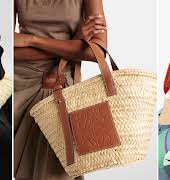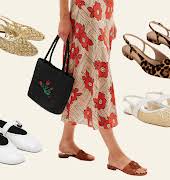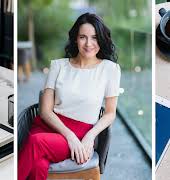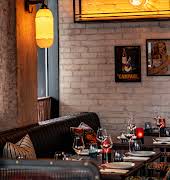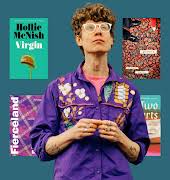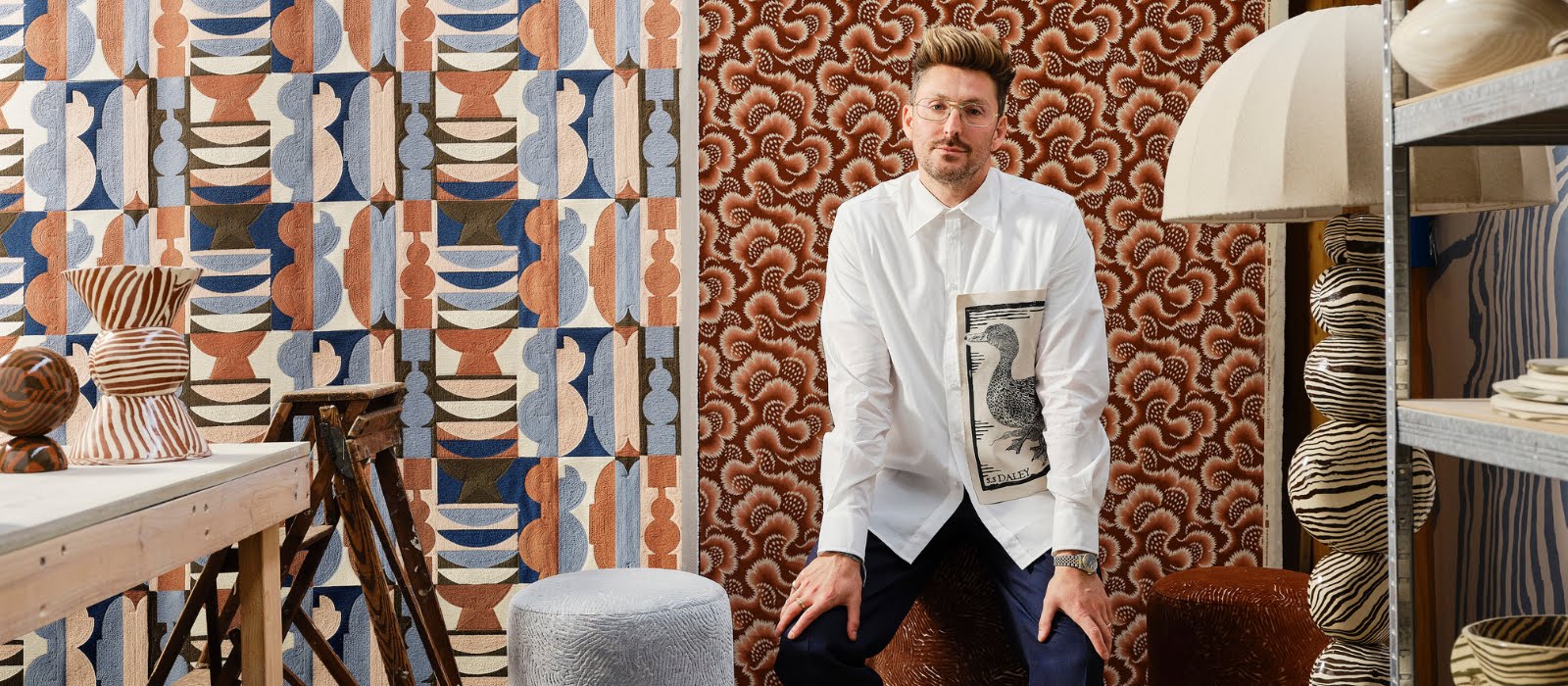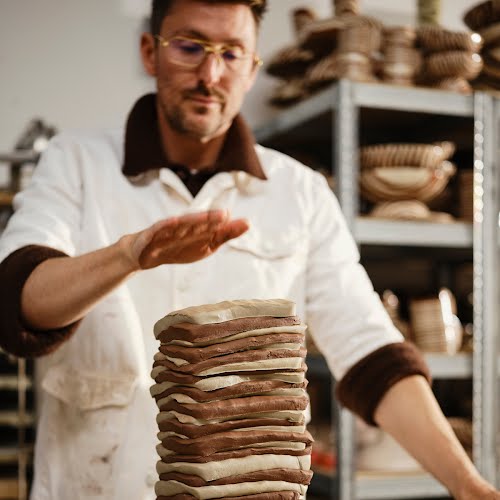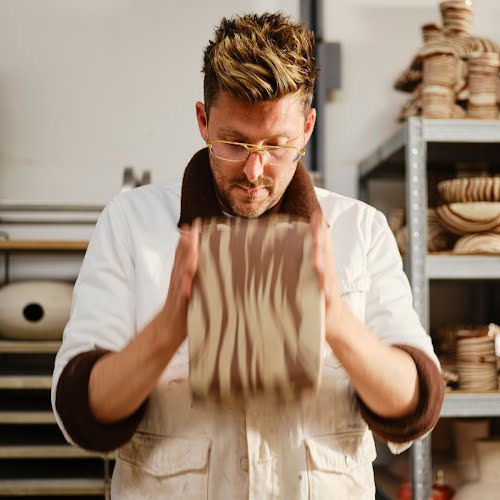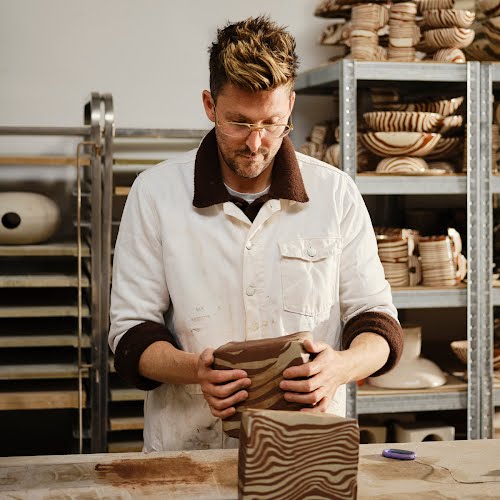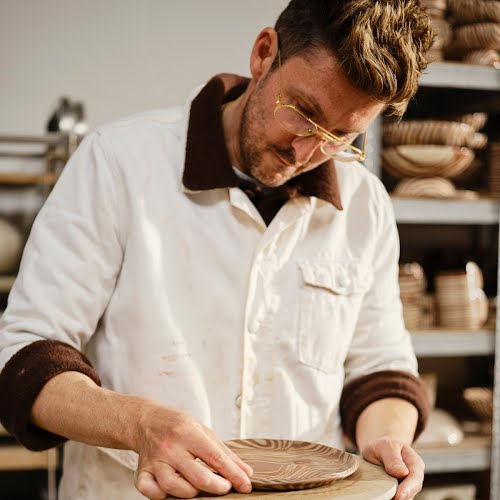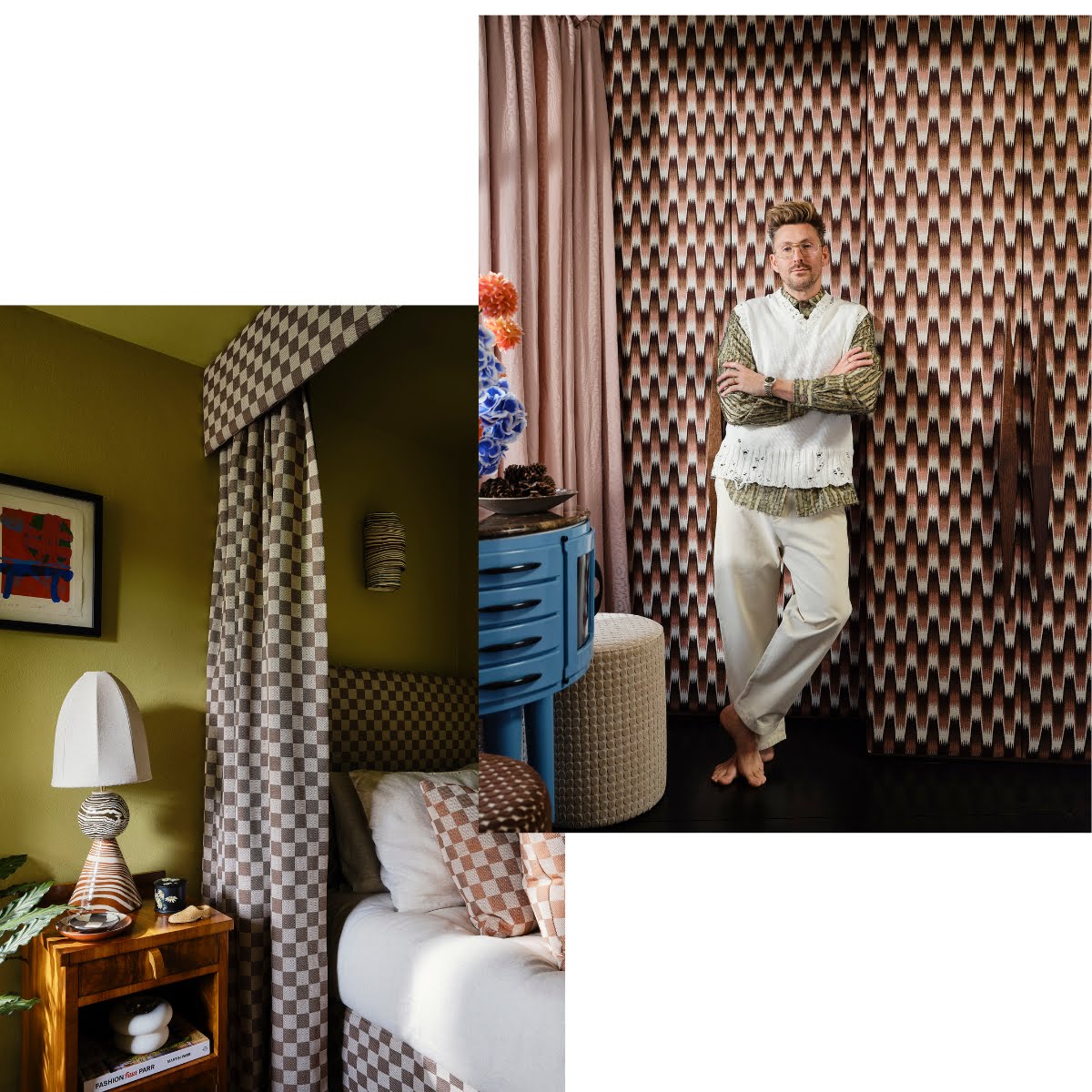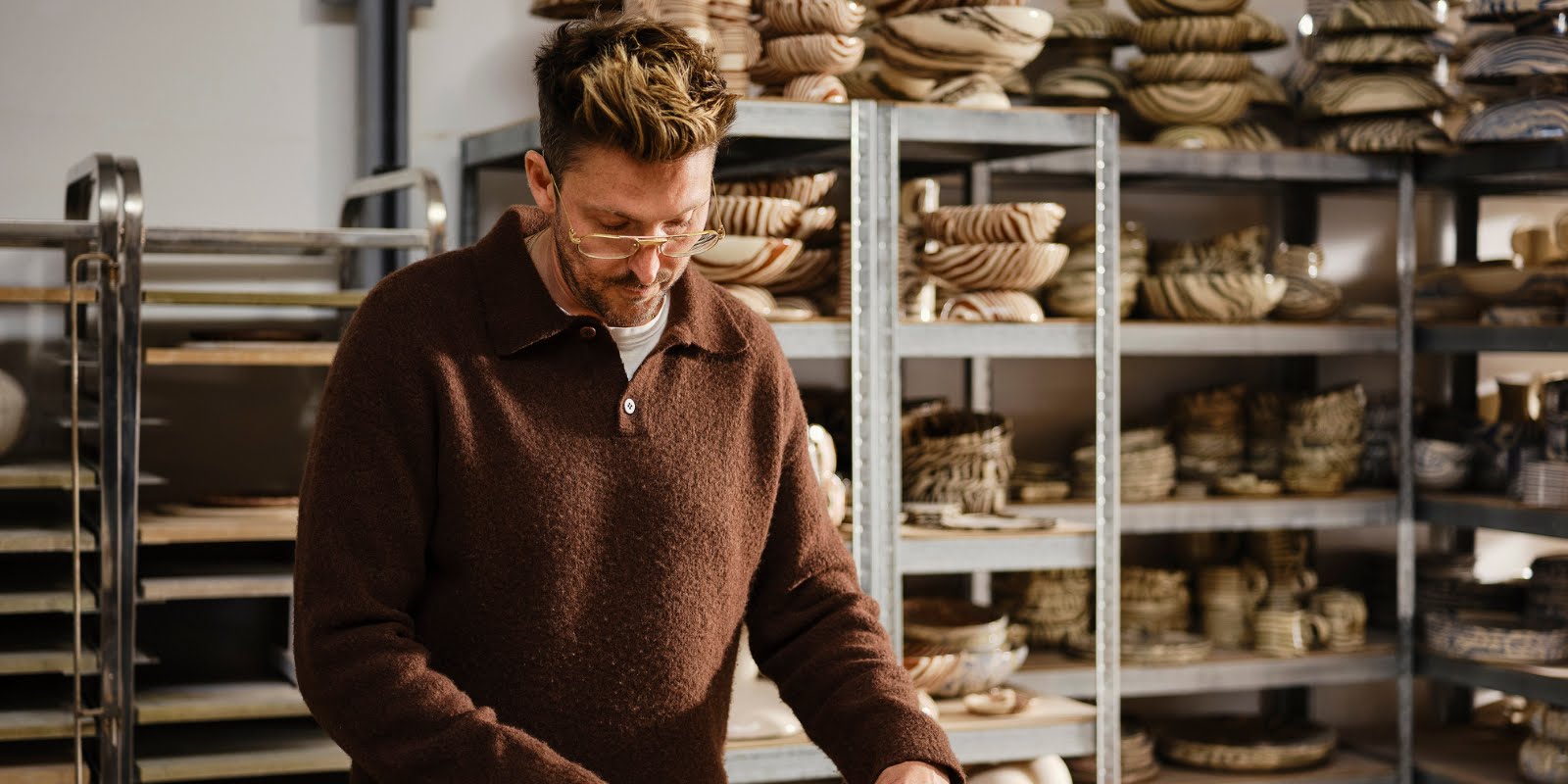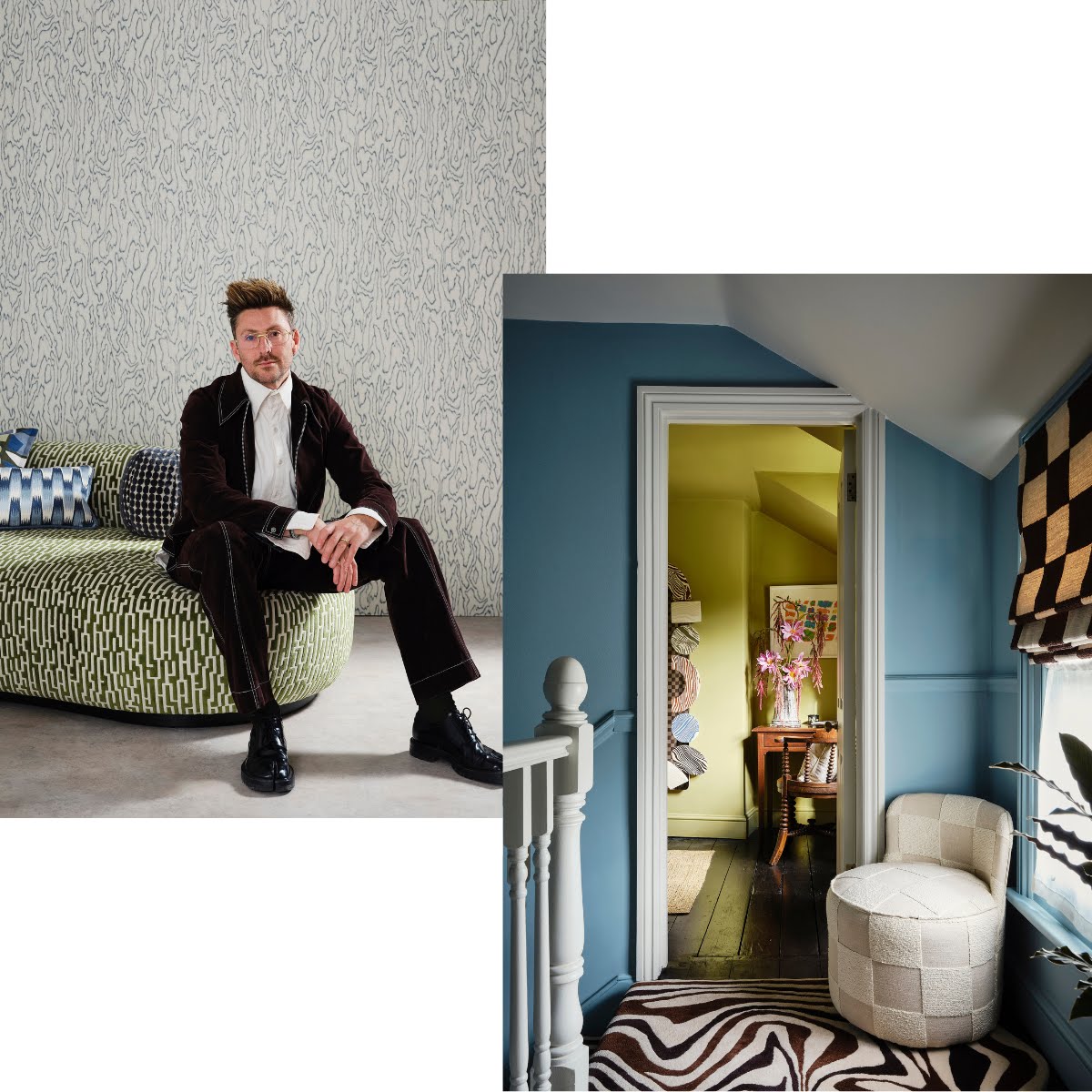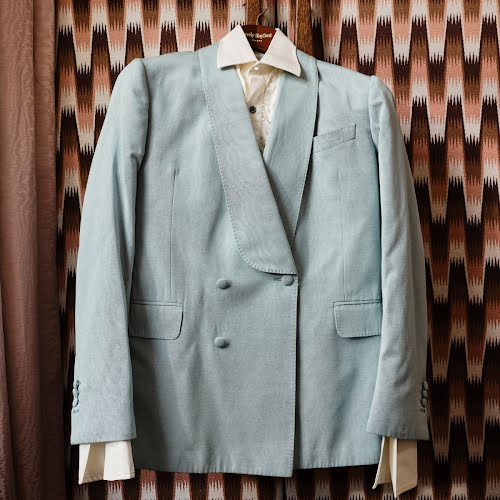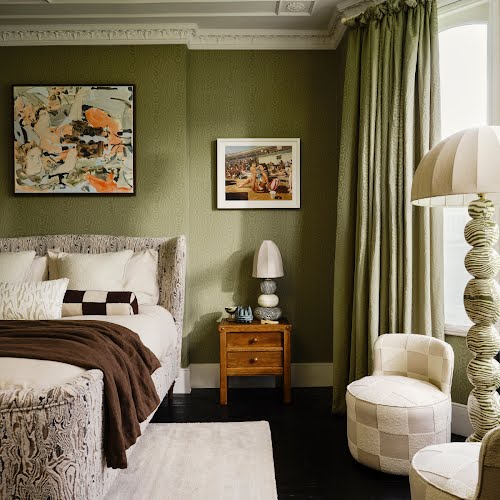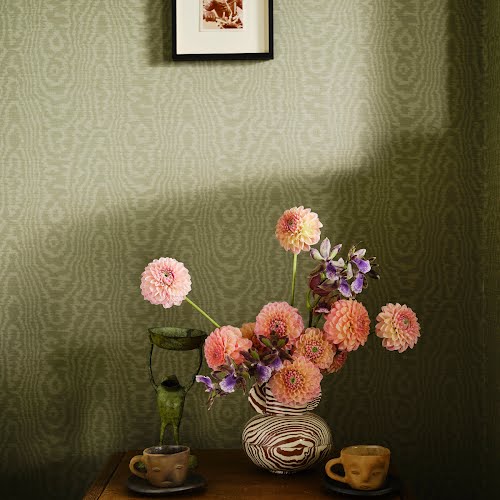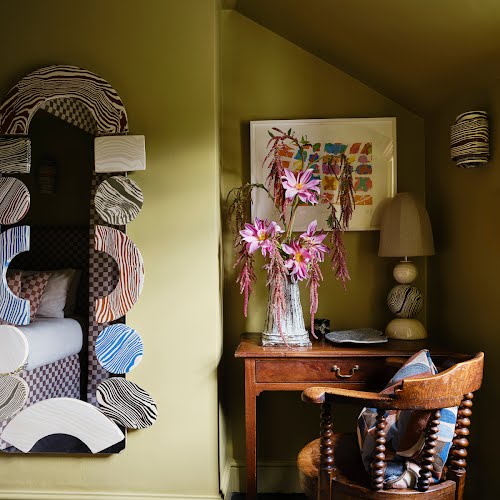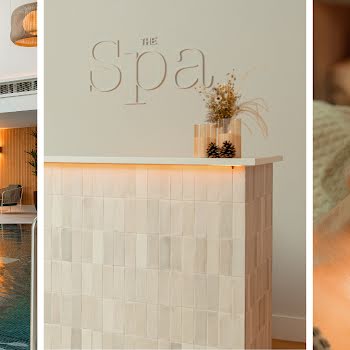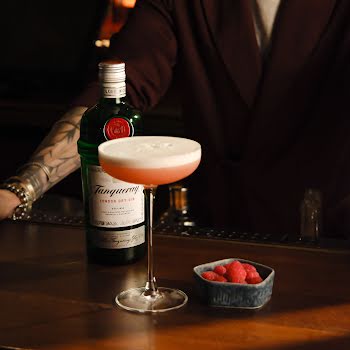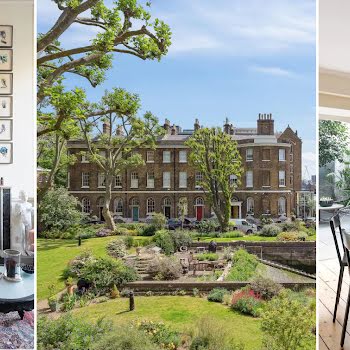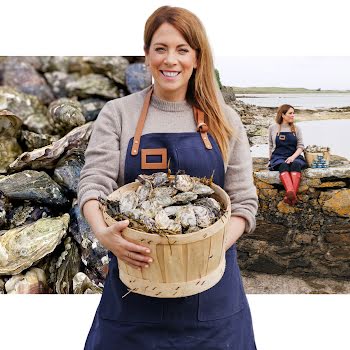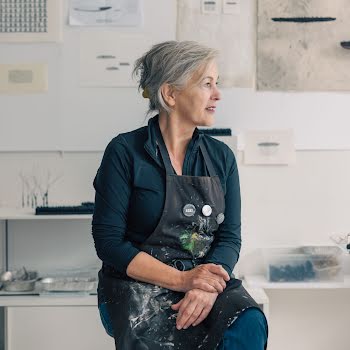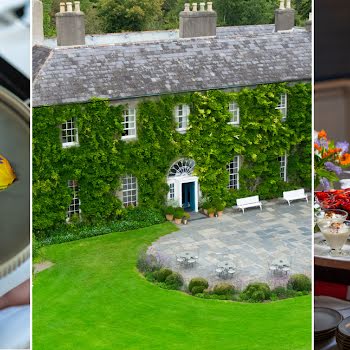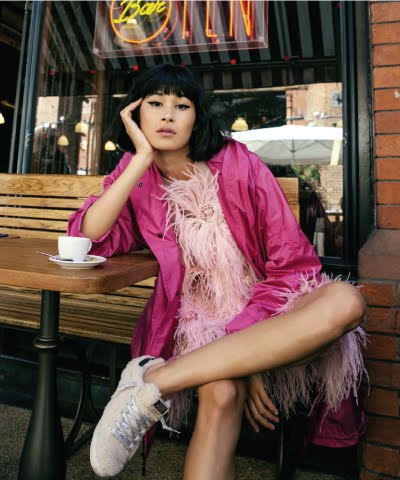
Henry Holland on career pivots, fast fashion and the revival of craftsmanship
Ruth O’Connor caught up with designer Henry Holland to discuss moving on from fashion and his new collection with iconic British brand Harlequin where his distinct aesthetic has been translated into an exquisite range of characterful fabrics and wallpapers.
Henry Holland is probably best known for his fashion label House of Holland. His fun and irreverent brand sort of happened by accident when he and his supermodel housemate Agnyess Deyn came up with those iconic slogan t-shirts emblazoned with ‘Do Me Daily Christopher Bailey’, ‘Uhu Gareth Pugh’ and ‘Get Your Freak On Giles Deacon’. Now the designer and entrepreneur heads up Henry Holland Design creating contemporary hand-built ceramics and homewares.

What happened to House of Holland and how challenging was that period for you?
House of Holland was sold off during the pandemic. It still exists and is owned and run by new people who I have no connection to. During that process, the investors and everyone involved took the decision to sell the business and it has continued to operate but I made the decision not to go with the sale. It was a personal thing really – I felt like I had had the most incredible time doing it, and loved and was proud of everything we had achieved, but at the same time I felt ready for a new challenge. I had created the business at age 22 and it was the perfect reflection of that – bold and playful – but it had started to feel less authentic to who I was at 38. We owed it to what we had created to not change the brand, so I was happy to let it go, but I don’t look at it because it is too emotional and I’m lucky that the brand name is not my full name.
Most people discuss their successes rather than failures but you were very open about the situation at the time – why was that?
I was happy to speak about the situation ‘mid-failure’ so to speak, because it was quite cathartic for me and I felt it was important for other people. I didn’t feel any shame or embarrassment and was really focused on everything that I had achieved rather than the failure at the time. The reason I was able to start the new company is because of my previous experience. That’s what is good about working with my husband because he witnessed the good and the bad firsthand and he is very active in terms of ensuring that we don’t make any of the same mistakes again.
How do you and your husband David Hodgson successfully combine the professional and personal?
We had worked together before, he had worked on a project basis with House of Holland and we worked in the same building on different projects so it was a natural progression that we would work together. When it’s good it’s really great because we are building something together. When it’s tough and there are disagreements, it’s awful! But we are pretty good at putting rules in place – for example, we are not allowed to talk about work at home without the other’s permission!
How has your experience in fashion influenced how you do business now?
The fashion industry is challenging because of the pace and these invisible rules that you have to adhere to. We don’t have to do that any more and we can set our own pace. I often say that if you’ve ever worked in fashion and go on to work in another industry you will never feel busy again. The new design business is pretty much direct-to-consumer. I would have loved to have had the courage to do that with my fashion business but once you have so much revenue tied into the wholesale system and you’ve staff and bills to pay, it’s almost impossible to do that retrospectively.
While still playful, would you agree that your aesthetic has grown up somewhat in this move from fashion to interiors?
When I started House of Holland I was going out five nights a week. It was a hedonistic time and my collections reflected that. When I started Henry Holland I was 38 and at home five nights a week so I was creating pieces to create the sanctuary that your home should be.
There were so many synergies to how both businesses started; finding something that I loved to do and being able to turn it into a business. I started having ceramic classes and quickly fell in love with it, so to be able to build that into a business was great.
From an aesthetic point of view, it was during those first stages of experimentation that I discovered the ability to use coloured clay to produce bold, almost graphic, designs like those I had created on fabric. The Japanese technique of Nerikomi gave a similar feeling and resulted in a more natural, cohesive and elevated palette with a strong identity that looked like me. When I found this I got a real sense instinctively that I was onto something.
How hands-on are you when it comes to the designing and making process?
I still make as much as I can because that’s why I started this in the first place but we have a team of about eight people – some are ceramicists who work on their own designs and work with us a couple of days a week and some people work full time with us. I make all of the new styles and train them how to make them and every piece is made in our studio in Hackney.
British manufacturing was something I was interested in doing having spent years flying garments from one side of the world to the other. Now I can see every single order being made on the table or being loaded into the kiln and that is really refreshing. The pieces are unique, handmade and organic, if we were to mass produce the product we would lose that sense that it has been made by someone’s hand.
Handmade is the exception now. It’s sad in a way but it’s nice that people are coming back to recognising craftsmanship and the handmade nature of products when everything is so commercialised and homogenised and global.

